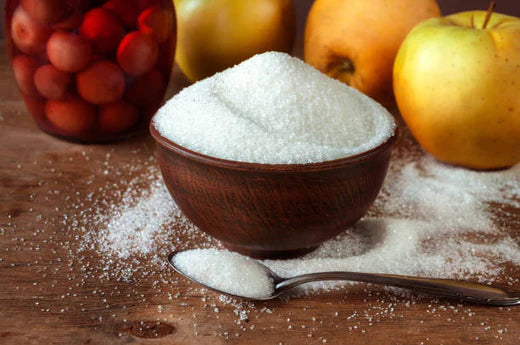What is Fructose?
Fructose is a naturally occurring sugar that can often be found in the presence of glucose. When fructose is present in the same amounts as glucose it is readily absorbed by our body, however, when there is excess fructose, this is when problems can occur.
Examples of foods containing fructose

How is fructose digested?
The digestion of fructose occurs via sugar transporters in the small intestine. The ability to absorb fructose varies considerably between individuals, this is why it is important to test your unique response. Unabsorbed fructose may draw water into the small intestine. Our body does this to rebalance the environment and reduce the high concentration of fructose.
What are the common symptoms associated with poor digestion of fructose?
In some people, the excess water may result in bloating and diarrhea, but it can also force the undigested food into the colon, where it becomes food for your gut bacteria. However, this produces gases that can lead to many distressing symptoms such as abdominal pain, bloating, constipation, and/or diarrhea.
In those with sensitive guts, even small doses of fructose can result in osmotic diarrhea, bloating, and increased flatulence. This is why it is important to identify your unique tolerance, as this can vary considerably from person to person.
What happens when food containing fructose is digested?
Let us use the example of an apple to take a closer look at the digestive process. After consumption, the apple passes through various stages of the digestive tract, in order for the body to extract as many of its nutrients as possible. Digestion begins as soon as the apple is chewed, as enzymes in our saliva break down the carbohydrates. Crudely chopped and chewed up by the time it reaches the stomach, gastric acid containing further digestive enzymes then turns the apple into a fine pulp.
Health consequences of changing habits
According to the latest research, massive sugar consumption is associated with more and more diseases. High blood pressure, obesity, diabetes, hyperinsulinism, non-alcoholic fatty liver disease, fructose malabsorption, gout, hyperuricemia, breast cancer, and renal diseases can either directly or indirectly be caused by the ingestion of huge amounts of fructose. Therefore, it is very interesting to take a closer look at your actual daily amount of sugar (and fructose respectively).
The human organism did not have much time to adapt to such drastic changes in our dietary habits. It is not prepared for handling such great amounts of fructose. This takes a toll that should not be underestimated. Evidence suggests that 25 g of table sugar daily lead to an increased risk for diabetes. Therefore, the World Health Organisation (WHO) recommends not exceeding this amount.“Finding your tolerance level is key to maintaining a balanced and healthy diet.”

